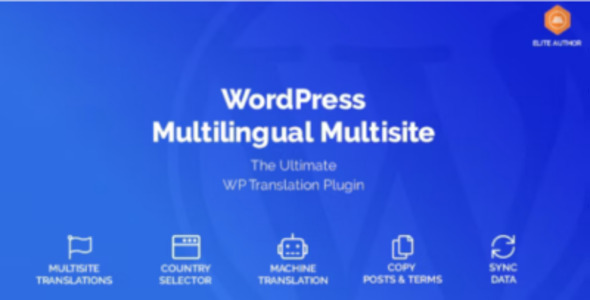WordPress Multilingual Multisite 1.2.11

70+ Reviews
with 5 star Ratings

99% Customer
Satisfaction

7-Days
Money Back
Request update for this product.
$99.00 Original price was: $99.00.$2.99Current price is: $2.99.
- Version: 1.2.11
- Last Updated: 26/09/2024
- License: GPL
- 1 year of updates & unlimited domain usage
- Updates Will Come With A 24-48h Delay
- Original product with the lowest price ever
- Downloaded from original authors
- Instant delivery & fast downloading speed
- 100% clean and tested code
- Get this Product for Free in Membership
In today’s globalized world, reaching audiences across different languages and regions is crucial for businesses and websites. One powerful feature of WordPress that can help you manage multilingual content is WordPress Multisite. When combined with the right multilingual tools, WordPress Multisite enables you to create and manage multiple language versions of your website efficiently.
In this article, we’ll explore how to create a WordPress multilingual multisite and optimize it for search engines (SEO). By the end, you will have a solid understanding of how to make your WordPress site accessible to international audiences while enhancing its visibility on search engines.
What is WordPress Multisite?
WordPress Multisite is a feature of WordPress that allows you to run multiple websites from a single WordPress installation. It’s like a network of sites sharing the same WordPress core, themes, and plugins, but each site has its own unique content and structure.
When combined with multilingual capabilities, WordPress Multisite becomes a powerful tool for businesses, organizations, and individuals who want to offer content in multiple languages without creating separate websites from scratch. Instead, you can set up a network of language-specific sites under one umbrella, making content management and SEO optimization much easier.
Key Benefits of WordPress Multisite
- Centralized Management: You can manage multiple sites from a single dashboard, making updates, backups, and maintenance much simpler.
- Shared Resources: Themes and plugins are shared across the network, reducing redundancy and making site-wide changes easier.
- Scalability: It’s ideal for growing businesses that need to expand into new markets with minimal technical overhead.
- Customization for Each Site: Each site can have its own settings, themes, and plugins, enabling you to cater to different audiences or languages effectively.
Multilingual Functionality in WordPress
To create a multilingual website using WordPress, you can either install a multilingual plugin or use the WordPress Multisite feature in combination with language-specific sites. The multisite approach allows you to create a separate site for each language version you want to support.
Popular Multilingual Plugins for WordPress
- WPML (WordPress Multilingual Plugin): One of the most widely used plugins for creating multilingual websites, WPML allows you to translate posts, pages, and custom post types. It works seamlessly with WordPress Multisite, enabling you to manage translations across your network of sites.
- Polylang: Polylang is a free plugin that offers many multilingual features, including support for translating posts, pages, categories, and menus. Like WPML, it’s compatible with WordPress Multisite and offers additional features such as language switchers and translation services.
- Weglot: A premium plugin that automatically translates your site’s content into different languages. Weglot supports over 100 languages and integrates well with WordPress Multisite, allowing you to create multilingual websites quickly.
Maintenance and Ongoing Optimization
Managing a multilingual WordPress Multisite requires ongoing maintenance to ensure your site performs well for both users and search engines.
Regular Content Updates
Keep each language site updated with fresh and relevant content. Regular updates signal to search engines that your site is active, which can improve rankings.
Monitor Analytics
Use tools like Google Analytics and Google Search Console to monitor the performance of each language site. Pay attention to metrics such as traffic, bounce rate, and conversion rate for each language, and adjust your content and SEO strategy accordingly.
Conclusion
Creating a WordPress Multilingual Multisite is a powerful way to expand your online presence and reach a global audience. By following SEO best practices such as optimizing URLs, using hreflang tags, and translating metadata, you can ensure that each language version of your site ranks well in search engines.
You must be logged in to post a review.




Reviews
Clear filtersThere are no reviews yet.